AUCTORES
Globalize your Research
Research Article | DOI: https://doi.org/10.31579/2641-0419/102
1National Heart Centre, the Royal Hospital, Muscat, Oman
2Medicine Department, the Royal Hospital, Muscat, Oman
3Medicine Department, Oman Medical Specialty Board, Muscat, Oman
4School of Nursing, the University of Adelaide, South Australia, Australia
5Medicine Department, Ministry of Health and Prevention (MOHAP), Dubai, UAE
*Corresponding Author: Issa Al Salmi, Medicine Department, The Royal Hospital, Muscat, Oman, Oman Medical Specialty Board, Muscat, Oman.
Citation: Umaima A. Raisi., Issa A. Salmi., Judy Magarey., Philippa Rasmussen., Suad Hannawi., (2021) The Lived Experience of Nurses Working in Cardiology Services with Online Continuing Professional Programs in Advancing their Specialized Clinical Practice: Phenomenology Study Methodology. J. Clinical Cardiology and Cardiovascular Interventions, 4(2); Doi:10.31579/2641-0419/102
Copyright: © 2021 Issa Al Salmi, This is an open-access article distributed under the terms of the Creative Commons Attribution License, which permits unrestricted use, distribution, and reproduction in any medium, provided the original author and source are credited.
Received: 30 October 2020 | Accepted: 13 November 2020 | Published: 05 January 2021
Keywords: Cardiology Services
Introduction: Nurses should be committed to undertake continuing professional development (CPD) courses to advance nursing practice and guarantee lifelong learning. Online CPD programs may allow nurses to fulfil the demand for specialty competency.
Aim: This study focuses on utilising online (CPD) activities to develop cardiac nurses’ ability to perform advanced clinical skills.
Method: The study was conducted in one of the largest accredited teaching hospitals in South Australia. The department is staffed by a specialised multi-professional team, some of whom have completed specialised cardiac post-graduation diploma courses in order to meet the complex needs of cardiac patients. To keep the team abreast of the latest developments in practice, the in-service education department at local study setting runs several CPD programs for the cardiology department via varied learning modes, such as online CPD programs, classroom learning and bedside-based learning. The nursing team maintains advanced clinical skills through online CPD, orientation programs, and in-service classroom-based courses. Regarding online CPD courses, electrocardiography interpretation and underwater sealing draining management courses are mandatory courses which all registered nurses must complete while working in medical or surgical cardiac wards.
Results: The interview process was conducted in five stages: 1. Determining the type of the interview where in such types of qualitative studies the researcher should focus on the fundamental question of the phenomenological inquiry throughout the unstructured, in-depth interview process. 2. Making initial contact where the researcher established a rapport with the participant and prepared them mentally by giving them the participant information sheet. 3. Context of the interview where interviews be conducted in a quiet room in the School of Nursing in order to maintain participant privacy and anonymity, participants requested to conduct the interviews in their work setting. Nonetheless, the researcher ensured that participant privacy and anonymity was upheld. 4. Selecting the lived experience where Each participant was interviewed once. Interview duration was 15 to 30 minutes. The interviews started with a grand tour question. Grand tour questions are very broad questions asked by the interviewer at the early stage of an interview to obtain a description of the event or experience. 5. All interviews were concluded by thanking the participant and offering them the choice to have a copy of their interview transcript to verify what they had said. The researcher wrote an interview summary after listening to the interviews on the same day. The summary was prepared to help the researcher evaluate the amount of data gathered and identify whether the point of data saturation was reached. In addition, writing the summary helped the researcher reflect on the interview and gain an understanding of the participant experience
This study explained the process of data collection, describing the setting, nature of participants and process of data collection using phenomenological interview. As the human experience is complex, gathering in-depth data should be systematic to ensure that the researcher has obtained the most sufficient data to explore the essence of the experience.
Any health system depends on its daily basis upon the staff that carry the health care towards our patients. Health system empowers its people to deliver the care they wish to establish. Nurses are the corner of the health care system worldwide. Hence, preparation of a manual of professional ethics, development of a career structure for nurses, setting standards of nursing education; nursing practice, and issuing guidelines for registration and licensing would further enhance the population health perspectives [1-4].
The specialised clinical environment is very challenging and complex for medical staff. Those working in such an environment need to constantly update their knowledge and skills in order to be proficient in their specialty. It is known that nurses should be committed to undertake continuing professional development (CPD) courses to advance nursing practice and guarantee lifelong learning [5-7]. Online CPD programs may allow nurses to fulfil the demand for specialty competency [8]. Various adult learner needs, and preferred learning style are a concern for clinical educators and online CPD could provide knowledge acquisition to enable nurses to achieve a proficient level of competency to work in a specialised clinical setting [9]. Nurse experience using online CPD provides an insight regarding this method of learning.
Cardiology nursing is one of the most challenging nursing specialties. The complex needs of cardiac patients, increasing acuity of care and rapid evolution in medical, surgical and interventional cardiology imposes high demands on this branch of nursing [10]. Furthermore, the nature of the specialty drives the nurses’ role to expand to deliver efficient, quality and cost-effective care. In other words, nurses are required to possess the competencies that aid them in providing rationalised, appropriate and effective interventions [10]. Riley, Brodie [11] emphasised that cardiac nurses should have the knowledge and skills to guide them not to only detect abnormalities, but also to diagnose and manage patients independently. Nurses should develop knowledge and skills pertaining to the varied and complex needs of their patients.
In the cardiac nursing context, there are three levels of clinical skills: core clinical skills, advanced clinical skills and specialised clinical skills [12]. Core clinical skills include basic, general nursing care; these skills are gained from undergraduate nursing education. Advanced clinical skills are those required to care for unstable patients who demand a high acuity of care. Specialised clinical skills require nurses to assess and manage complex patient needs and assist in interventional procedures [12]. Riley, Brodie [11] note that nurses need a post-registration education to attain specialist skills, whereas advanced clinical skills can be achieved via varied learning modes, such as in-service education activities, continuing professional development and orientation programmes.
This study focuses on utilising online (CPD) activities to develop cardiac nurses’ ability to perform advanced clinical skills. To define advanced clinical skills referred to in this study, the researcher used Christensen [13] advancing nursing practice definition. Christensen integrated Benner’s clinical competency model and Rolfe’s knowledge typology theory to describe advancing nursing practice. According to Christensen [13] advancing nursing practice is professional development process of knowledge and skills acquisition to reach to proficiency in clinical practice. Further illustration of advancing nursing practice is presented in the literature review section. There is an increasing amount of evidence supporting the notion that the more advanced knowledge and skills a nurse has pertaining to his or her area of specialty, the better his or her patients’ outcomes [14]. The researcher studied the lived experiences of cardiac nurses working to advance their practice using online (CPD) activities to yield deep insight into the effectiveness of this learning mode [15-17].
The hermeneutic phenomenological perspective influenced the interview process by using a systematic approach to the phenomenological interview. This manuscript provides a description of the study setting and study sample. Also, this study explains the process of gathering rich, in-depth data using one to one unstructured interview.
The researcher conducted an un
Phenomenology hermeneutic is the philosophical framework that guided this study. This relativist ontological, emic epistemological approach was used to achieve in-depth understanding of the nurse experience of learning using an online CPD program as a tool to advance their practice. This methodology uncovers the lived experience to reveal meanings embedded within the lived experience and uses an interpretive process to increase understanding of these meanings. Therefore, data gathering techniques in this study focused on gaining deep information by exploring the nurse experience.
Study setting
The study was conducted in one of the largest accredited teaching hospitals in South Australia. This hospital provides many cardiac services for patients from South Australia, the Northern Territory, and South East Asia who are referred from the AUS-health services. The cardiology department is divided into two main units: the cardiology unit which provides medical and interventional cardiac services and the cardiothoracic unit which provides surgical services. The department is staffed by a specialised multi-professional team, some of whom have completed specialised cardiac post-graduation diploma courses in order to meet the complex needs of cardiac patients. To keep the team abreast of the latest developments in practice, the in-service education department at local study setting runs several continuing professional development (CPD) programs for the cardiology department via varied learning modes, such as online CPD programs, classroom learning and bedside-based learning. The nursing team maintains advanced clinical skills through online CPD, orientation programs, and in-service classroom-based courses. Regarding online CPD courses, electrocardiography interpretation and underwater sealing draining management courses are mandatory courses which all registered nurses must complete while working in medical or surgical cardiac wards.
Population
Purposive sampling was used to select participants because the researcher aimed to recruit nurses able to reflect on the experience of advancing their skills in the specialised area of cardiology. According to Schneider, Whitehead [18], purposive sampling is appropriate when the researcher wants to collect rich, in-depth information from participants who have special knowledge or experience that the researcher is looking.
The target sample was registered nurses without speciality qualifications with more than one year experience working in medical and surgical cardiac wards. As the aim of phenomenological study is to develop rich and deep information about the phenomena, the sample size was determined using the principle of saturation. Data saturation is repetition of discovered data and confirmation of previously collected data [19]. The aim of data saturation is to gather a large pool of rich and deep information and to ensure that all data about the phenomena under investigation has been collected, whereby the researcher can extract new themes for the phenomena [19]. The researcher reaches the point of data saturation when no further new information is obtained [20]. In this study, data saturation was achieved with five nurses.
The purposive sample was selected from an accessible population representing the specialised area of one hospital. A reason for choice of this specific hospital was that it is a tertiary hospital where most of the departments are specialised and have high patient acuity, so the researcher was able to find the target sample. As pointed out by Fain [21], the researcher must choose an accessible population that represents the target sample.
Inclusion and exclusion criteria
In phenomenological research, the participants are expected to reflect upon their experience for the intended topic. Therefore, inclusion and exclusion criteria must be carefully established [18].
The sample was comprised of registered nurses (RNs), beyond their first-year post graduation, who do not have a specialty qualification and are working in medical and surgical cardiology. This target group was included in the study because of the unique nature of work in the cardiology setting. More specifically, compared with patients in a general clinical setting, the condition of cardiac patients is more likely to change rapidly, which requires nurses with advanced knowledge and skills to make appropriate and timely decisions.
Exclusion
Participants excluded from the study includeds registered nurses who work in other departments, and ward managers and nursing supervisors of departments in the selected setting. The rationale for not including such participants is because the researcher wanted to explore the perceptions of nurses who have daily patient contact which requires them to possess a high level of competency. According to Oman, Fink [22] exclusion criteria enables the author to get the required sample and valid findings.
Newly graduated nurses with less than one-year experience was excluded because they are not required to practice specialised nursing skills in the first year after graduation. Nurses with nursing post-graduate certification in cardiology were also excluded because they already have gained competencies and skills via the post-graduation cardiology course, and their learning needs are more advanced than those of other nurses.
Recruitment
The researcher used a three-stage recruitment strategy. The first stage of introduction sessions was conducted to explain the objectives and significance of the research to nurses working in the medical and surgical cardiology wards. After the session, the researcher distributed a participant information sheet which explained participation procedures and listed the researcher’s contact details (see appendix 1).
Also, the researcher distributed recruitment information flyer in the cardiology words (see appendix 2). Through conducting this stage, the researcher ensured that potential participants understood the inclusion criteria of the study and were able to contact the researcher if they decided to volunteer to participate. In the second stage, the researcher contacted volunteer participants to arrange an interview day and time. In the third stage, the researcher met volunteer participants on the scheduled day of interview and provided them with a consent form to sign before each interview commenced (see appendix 3). Also, the researcher used the snowball recruitment strategy as the participation level was proven to be too low for data saturation. Snowball sampling is the use of one participant to source the next participant and is a useful strategy when there is difficulty recruiting participants [19].
Data collection tool
structured interview with each participant to explore the nurse experience with online CPD. Interviews took from 30 minutes to one hour. The rationale of choosing this tool was because the researcher was able to format discussion questions that covered all study objectives. Also, the researcher was able to ask participants to elaborate in order to clarify a point or obtain more information. According to Schneider, Whitehead [18], interviews give the researcher many privileges, such as the opportunity to gather deep, detailed information and clarify information from participants. The researcher used several tactics during the interview that added richness to collected data. Further explanation about the data collection tool is discussed in the interview process section.
Ethical consideration
Ethical approval
The researcher obtained approval from the Royal Adelaide Hospital Human Research Ethics Committee. Ethical approval was granted and given number HREC/16/RAH/168) (see appendix 4).
Informed consent
The researcher obtained written informed consent from participants to ensure that autonomy was maintained. The researcher is responsible to ensure that participants understand the study, including benefits, risks, and participant rights [21]. Thus, participants were provided with information sheet along with the consent form (see appendix 2&3). The participant information sheet outlined the purpose of study, procedures, risks, benefits, and participant rights. Also, it included the ethical committee approval code and the ethical committee contact number to call if they had concerns regarding the data collection process. The researcher ensured that participants read and understood the information sheet before giving written consent. According to Fain [21], informed consent is one of the procedures that can be used to protect participant rights.
Anonymity and confidentiality
In interview it is difficult to maintain participant privacy and confidentiality due to face to face interaction and the depth of information which may easily reflect participant identity [19]. However, the researcher in this study used the following strategies to protect participant confidentiality and anonymity. First, the researcher offered participants interview venue away from their clinical area, so their colleagues and ward manager were not aware they were being interviewed. However, participants preferred to have the interview conducted in a quiet private room in their workplace, ensuring that the room was not recognised as an interview room and they did not inform others they had been interviewed. Second, the researcher guaranteed that no one would have access to the primary source of data except the researcher. Third, the researcher respected the right of participants to withdraw from the study at any time and ensured that they were aware about this right before giving signing the consent form. Fourth, the researcher used pseudonyms on interview transcripts and transcripts were not shown to anyone other than the researcher and supervisors and they are saved in locked file so no one else can access them. Finally, the researcher numbered the interview recording tapes, so they were not carrying participant names with the list of names stored separately in a password processed file. The password was shared with research supervisors.
The researcher safely stored the recorded and the transcribed interviews; this data did not contain the participants’ names. The list of participants’ names was stored in a password-protected file. The files and passwords were shared only with the research supervisors.
Data collection
Data collection in phenomenological hermeneutic research involves gathering of participant experiences and related reflections to explore the deep and significant meanings of their experiences [23]. van Manen [23] listed several types of tools to serve the purpose of phenomenological hermeneutic research, such as interviewing and observation. Experiential anecdotes and experiential descriptions found in the literature, biographies, diaries, and journals are part of phenomenological data [23].
The interview process was conducted in five stages as described below.
van Manen [23] argued that in phenomenological hermeneutic research, the method does not rule the question, but the question determines the method appropriate to build up the direction which provides an understanding of a human phenomenon. Therefore, in such types of qualitative studies the researcher should focus on the fundamental question of the phenomenological inquiry throughout the unstructured, in-depth interview process.
The researcher established direct contact with each participant prior to the interview day. By doing so, the researcher established a rapport with the participant and prepared them mentally by giving them the participant information sheet. van Manen [24] encouraged researchers to develop openness and closeness with the participant to gain their trust before conducting a phenomenological interview, especially if the interview is around their personal experience, something which is not easily disclosed by everyone.
All interviews were conducted in a quiet room in the ward. Although it was proposed that interviews be conducted in a quiet room in the School of Nursing in order to maintain participant privacy and anonymity, participants requested to conduct the interviews in their work setting. Nonetheless, the researcher ensured that participant privacy and anonymity was upheld. In fact, van Manen [24] suggested that a phenomenological interview should be conducted in a place where the surrounding atmosphere triggers interviewees to recall their experience. Participants in this research were able to recall some examples of the cases which they cared for and applied the knowledge gained from the online CPD ECG interpretation course or the online under water sealing chest draining course.
Each participant was interviewed once. Interview duration was 15 to 30 minutes. The interviews started with a grand tour question (see appendix 5). Grand tour questions are very broad questions asked by the interviewer at the early stage of an interview to obtain a description of the event or experience [25]. This type of question gives participants freedom to express their lived experience. Furthermore, the researcher used some other interview tactics to control the interview process and focus on the aim of the interview, such as probing and rephrasing questions (see appendix 5). The researcher used direct and indirect probing to encourage participants to elaborate more on the issues they were expressing (see appendix 5). Guest [25] stated that probing involves inductive and unscripted questions based on the last response of an interviewee. The researcher also used probing to steer the conversation during the interview when participants diverted from the main topic. Probing is a key element in a successful unstructured in-depth interview because it helps one to pull more inductive thoughts from participants to promote rich and deep responses [25].
Guest [25] argued that the interviewee is the expert of their own experience and opinions, so it is important to grasp their meaning accurately. The researcher rephrased some of the thoughts and sentences that participants expressed to ensure what the researcher understood was correct. Participants tended to give examples when the researcher rephrased their words for further understanding, and this was helpful to gaining deeper information.
The researcher used two audio recorders during interview in case one failed. Recording the interview allow the researcher to fully engaged with participant descriptions of their experience. Also, the researcher was able to take memos of nonverbal expressions, words, and statements that helped during the interpretation and data analysis stages.
Guest (2013) [26] stressed maintaining consistency across the interview by using tactics to gather the optimal data required. The researcher used prepared notes during the interview in order to focus on the phenomenon in question. The prepared notes contained some keywords related to presumptions about the phenomenon. van Manen [24] encouraged researchers conducting phenomenological research to be prepared mentally for an interview and focus on the main aim of the interview and obtain concrete data about participant experiences, stories, and examples. In this study, the researcher did not allow presumptions to impact on participant thoughts and descriptions.
All interviews were concluded by thanking the participant and offering them the choice to have a copy of their interview transcript to verify what they had said. The researcher wrote an interview summary after listening to the interviews on the same day. The summary was prepared to help the researcher evaluate the amount of data gathered and identify whether the point of data saturation was reached. In addition, writing the summary helped the researcher reflect on the interview and gain an understanding of the participant experience.
The essential themes and essence of the lived experience can be grasped by textual reflection on lived experience. van Manen [23] emphasised that a phenomenological researcher should be totally engaged with textual reflection as it is the only way to approach the meaning of human experience. Also, he stressed that a researcher should be thinking of the phenomenon described in the text while approaching the intended unity of meanings, meaning structures, or themes.
The researcher conducted unstructured interviews with participants to explore their experience with online CPD. van Manen [23] emphasised that interviewing is an appropriate method for phenomenological hermeneutic research as it provides a narrative of the participant experience, thus ensuring rich and deep understanding. In fact, van Manen [23] stated that this type of interview aims to gather experiential material, such as stories, anecdotes, recollection of experiences and reflection on those experiences. In other words, data collection is a tool for gathering lived experience materials which are beyond subjective data collection tools of other qualitative research such as observation in ethnography study. In order to achieve the purpose of the interview, the researcher must be oriented to the phenomenological question of ‘what is the nature of the phenomenon’ (i.e. the contribution of online CPD to nursing skills advancement) [23]. To further understand how phenomenological questions interplay during data collection, van Manen [23] produced six activities to be followed during data collection which are described in the following section. van Manen [24] defined method as a way or attitude that directs the researcher to understand the phenomenon.
The phenomenon of interest stemmed from the researcher’s own experience of using e-learning material as a learning approach for skills advancement. As the researcher’s background is cardiology nursing, the concern was around correlation between the use of available online CPD materials and cardiac nursing skills advancement. The researcher wondered what the experiences of other registered nurses were when they used this type of learning approach. Did they have a similar experience as the researcher? How did they perceive these courses in advancing their clinical skills? What meanings do such experiences add to their life in general and in professional terms, in particular? At this stage, the researcher became oriented to the phenomenon of interest and started exploring the nature of this phenomenon through others’ experiences. This means the researcher’s reflection and pre-understanding of the experience is the foundation of a phenomenological question. van Manen [23] claimed that being oriented to the phenomenon means the essential nature of a person’s lived experience is sensed and the researcher raises phenomenological questions and concerns.
Investigating the experience as it is lived starts with gathering experiential materials, such as participant stories, experience descriptions, and experience reflections that can lead to exploration of the fundamental nature and not the conceptuality of the lived experience [23]. In this study, the researcher started with her own personal experience using the online CPD program for skills and knowledge enhancement. van Manen [23] stresses, the description of the researcher’s own personal experience gives a basic idea of the phenomenon which helps in being oriented with the main question through all stages of the research. As it is a lived experience that the researcher is investigating, experiential materials were gathered in textual, dialogical, and conversational forms.
As pointed out earlier, the researcher used unstructured, open-ended interviews to gather participant experiential accounts. More specifically, the phenomenological interview principles of van Manen [24] were applied. van Manen [24] differentiated between phenomenological and hermeneutic interviews stating that a phenomenological interview is a tool to gather experiential materials, whereas a hermeneutic interview is a tool to purely interpret data gained from a phenomenological interview, observation, or other means of data collection [24]. The reason behind not choosing the hermeneutic interview for this research is that the researcher was not expecting participants to interpret their own experiences. In fact, [24] highlighted the failure of people to accurately interpret their own experiences.
In phenomenological hermeneutic research, the purpose of transcribing an interview is to capture the participants’ own words and at the same time giving privilege to the researcher to interpret those words. The researcher should ensure that the transcription accurately reflects the reality of the experience. Errors during the interview transcribing, such mishearing or misinterpretation of words, can change the meaning of the phrase, lead to missing some key themes, or bring up non-existent themes [27]. In this study, the researcher transcribed interviews verbatim, producing textual accounts of the participant experience from which the essential themes and meanings were extracted. Transcription was written in dialogical conversational form, presenting the interview as it had been conducted without reduction. To avoid errors and misinterpretation during transcription in this research, the researcher listened to the interview recordings three times: [1] without transcribing to grasp the full experience, [3] listening and transcribing, and [3] listening to verify the transcript. The researcher offered the participants their interview transcripts for further verification.
Though the researcher ensured that the transcription was accurate, the meaning within the text can be self-alienated after transcription [23]. In other words, to apply textual reflection, the researcher has to consider a process that transforms the text to its real meanings. The hermeneutic circle introduced by Gadarmer was used to bring out the meaning e buried within the text during transcription. Text interpretation is elaborated upon further in the interpretation section.
Understanding the art of writing and rewriting is essential in phenomenological research. van Manen [23] stressed that language is the only way for textual symbolic form. As indicated earlier, phenomenological research aims to transform the lived experience into a textual expression in which the text reflects meaning. van Manen [23] stated that creating phenomenological text is part of the research process and pointed out that writing is fused with research and the text has to reflect itself. This means the process of writing is more than just a demonstration of information. Hence, during data collection in this study, the researcher was very conscious of verbal and nonverbal language used by participants.
The researcher was mindful of the phenomenological inquiry through the interview process to prevent participants from diverting from the main topic. However, some participants lost focus and started talking about their colleagues’ experiences with online CPD programmes. However, the researcher was able to bring the conversation back to the main topic by rephrasing the question and referring to their experience using some keywords the participant had mentioned about themselves. Being strongly oriented to the phenomenon helps prevent the rise of superficialities in the description of the lived experiences [23].
To balance the research context means to constantly measure the whole text against the significant part that influences the meaning of the whole textual structure [23]. To achieve balance in context during the data collection phase, the researcher implemented two strategies. First, the researcher was engaged in the study of the fundamental phenomenological question through the interview process. Second, frequent dealing with audio taped interviews and transcripts, and creating summaries and memos, helped capture the experience within the context. van Manen [23], however, argued that being so immersed in phenomenological inquiry may lead the researcher to lose the perspective of the dialogical text which contains deep meanings of the phenomenon. Therefore, the researcher ensured that the balance of context was achieved by adopting a cycle that started with data collection, followed by thematic analysis and interpretation. This cycle enabled the researcher to determine whether themes extracted from interview transcripts reflected the context and phenomenon overall.
Conclusion
This study explained the process of data collection, describing the setting, nature of participants and process of data collection using phenomenological interview. As the human experience is complex, gathering in-depth data should be systematic to ensure that the researcher has obtained the most sufficient data to explore the essence of the experience.
Conflict of Interest (COI) statement: “The authors declare no conflicts of interest”
Financial Disclosure statement: None
PARTICIPANT INFORMATION SHEET
PROJECT TITLE: The lived experiences of nurses working in cardiology services with online continuing professional development programs to advance their specialised clinical practice: A phenomenological study.
Dear Participant,
You are invited to participate in the research project described below.
What is the project about?
The research is about exploring the registered nurses experience with online continuing professional development programmes in advancing their cardiac knowledge and skills. This research will help to understand the experience of bedside registered nurses without specialised qualifications, in seeking to advance their clinical skills by undertaking online continuing professional development (CPD).
Who is undertaking the project?
This research will be undertaken by Umaima Al-Raisi as a part of Master degree programme in Nursing Science at the University of Adelaide under the supervision of:
Associate Professor Judy Magarey, Deputy Head of School (Learning and Teaching)
School of Nursing
The University of Adelaide
Dr Philippa Rasmussen
Master of Nursing Science Program Coordinator
School of Nursing
The University of Adelaide
Why am I being invited to participate?
You are invited to participate in this research because you are registered nurse, have more than one year of experience, do not have the speciality qualification and you are working in medical or surgical cardiology.
What will I be asked to do?
You will be asked to participate in a semi structured interview and talk about your experience with online continuing professional development programs. The interview will be conducted in a private room in the school of nursing at the University of Adelaide. The interview will take approximately 30 to 60 minutes.
Each participant will be interviewed individually and it will be audio recorded. Confidentiality will be maintained; your identity will not be disclosed.
Are there any risks associated with participating in this project?
No risks have been identified for you in this research. However, you can stop the interview or withdraw from the study at any time if you feel distressed and uncomfortable while talking about your experience.
What are the benefits of the research project?
There is no personal benefit gained from this research. However, understanding your experience will help guide nursing leaders and educators to develop and evaluate a system that will promote online continuing professional learning among staff nurses. The finding of the study may inform and changed required to the mandatory online of continuous professional activities to serve the need of the specialised settings.
Can I withdraw from the project?
Participation in this research is voluntary. You can withdraw at any time of the study without any consequence.
What will happen to my information?
The researcher will ensure that your confidentiality and anonymity is be maintained through: using pseudonyms on the interview transcripts and code number on the recorded tapes. The transcripts and the list of names will be stored separately in a password processed file. The password will only be shared with the researcher’s supervisors. The data collected will only be used for the study purposes and your personal information will not be identified in the masters thesis or any other publication.
Who do I contact if I have questions about the project?
For further details or questions please contact:
Primary researcher:
Umaima Al-Raisi
Student in Master of Nursing Science (Cardiology), the University of Adelaide.
Mobile No (Australia): +61 450840757
Mobil No (Oman): +968 9900911
E-mail: [email protected]
Research Supervisors:
Associate Professor Judy Magarey
Office No: +61 88313 3594
Email: [email protected]
Dr Philippa Rasmussen
Office No: +61 882222991
Email: [email protected]
What if I have a complaint or any concerns?
The study has been approved by the Research Ethics Committee at the Royal Adelaide Hospital (approval number HREC/16/RAH/168). The research will be conducted according to the NHMRC National Statement on Ethical Conduct in Human Research, 2007. If you have questions or problems associated with the practical aspects of your participation in the project, or wish to raise a concern or complaint about the project, and then you should consult the Principal Investigator.
If you wish to speak to someone not directly involved in the study about your rights as a volunteer, or about the conduct of the study, you may also contact the Chairperson, Research Ethics Committee, and Royal Adelaide Hospital on 8222 4139.
If I want to participate, what do I do?
If you fit the inclusion criteria and you wish to participate, you need to contact the primary researcher on the mentioned above contact details via a call, text message, or an email. Then you will receive a call from the researcher to schedule a day for an interview. Before starting the interview, the researcher will ask you to read the information sheet and then if you choose to participate sign a written consent. By signing the consent, you show your:
Understanding about the consent statement.
Willingness to be part of the research.
Understanding about the research as described in the participant sheet.
Yours sincerely,
Umaima Al-Raisi
Student in Master of Nursing Science (Cardiology)
School of Nursing
The University of Adelaide
Appendix 2: Recruitment information flyer
What if I have a complaint or any concerns?
The study has been approved by the Research Ethics Committee at the Royal Adelaide Hospital (approval number HREC/16/RAH/168). The research will be conducted according to the NHMRC National Statement on Ethical Conduct in Human Research, 2007. If you have questions or problems associated with the practical aspects of your participation in the project, or wish to raise a concern or complaint about the project, and then you should consult the Principal Investigator.
If you wish to speak to someone not directly involved in the study about your rights as a volunteer, or about the conduct of the study, you may also contact the Chairperson, Research Ethics Committee, and Royal Adelaide Hospital on 8222 4139.
If I want to participate, what do I do?
If you fit the inclusion criteria and you wish to participate, you need to contact the primary researcher on the mentioned above contact details via a call, text message, or an email. Then you will receive a call from the researcher to schedule a day for an interview. Before starting the interview, the researcher will ask you to read the information sheet and then if you choose to participate sign a written consent. By signing the consent, you show your:
Understanding about the consent statement.
Willingness to be part of the research.
Understanding about the research as described in the participant sheet.
Yours sincerely,
Umaima Al-Raisi
Student in Master of Nursing Science (Cardiology)
School of Nursing
The University of Adelaide
Appendix 2: Recruitment information flyer
What if I have a complaint or any concerns?
The study has been approved by the Research Ethics Committee at the Royal Adelaide Hospital (approval number HREC/16/RAH/168). The research will be conducted according to the NHMRC National Statement on Ethical Conduct in Human Research, 2007. If you have questions or problems associated with the practical aspects of your participation in the project, or wish to raise a concern or complaint about the project, and then you should consult the Principal Investigator.
If you wish to speak to someone not directly involved in the study about your rights as a volunteer, or about the conduct of the study, you may also contact the Chairperson, Research Ethics Committee, and Royal Adelaide Hospital on 8222 4139.
If I want to participate, what do I do?
If you fit the inclusion criteria and you wish to participate, you need to contact the primary researcher on the mentioned above contact details via a call, text message, or an email. Then you will receive a call from the researcher to schedule a day for an interview. Before starting the interview, the researcher will ask you to read the information sheet and then if you choose to participate sign a written consent. By signing the consent, you show your:
Understanding about the consent statement.
Willingness to be part of the research.
Understanding about the research as described in the participant sheet.
Yours sincerely,
Umaima Al-Raisi
Student in Master of Nursing Science (Cardiology)
School of Nursing
The University of Adelaide
Appendix 2: Recruitment information flyer
Consent form
PROTOCOL NAME: The lived experiences of nurses working in cardiology services with online continuing professional development programs to advance their specialised clinical practice: A phenomenological study.
INVESTIGATORS:
This research will be undertaken by Umaima Al-Raisi as a part of Master of Nursing Science program at the University of Adelaide under the supervision of:
Assoc. Prof. Judy Magarey, RN, BNurs, MNurs (research), DNurs.
Dr Philippa Rasmussen, RN BN, Grad Cert CAMHN, Grad Dip Psychological Studies, MNurs, PhD.
Thereby, I certify that:
Name of the subject:
Signed: Dated:
I certify that I have explained the study to the participant and consider he/ she understand what is involved:
Signed: Dated:
Appendix 4: Ethical Approval
Objective of the study
To understand the experience of bedside registered nurses without specialised qualifications, in seeking to advance their clinical skills by undertaking online continuing professional development (CPD).
Open ended questions
As you it is explained in the participant information sheet, this study about exploring your experience with using online CPD course and it relation in advancing your clinical skills and knowledge in your working area.
Rephrasing participant’s words
Direct and indirect probing
Direct probing by repeating some words to encourage the participant to continue describing their experience:
Indirect probing by: nodding head and sustain eye contact with the participants
Clearly Auctoresonline and particularly Psychology and Mental Health Care Journal is dedicated to improving health care services for individuals and populations. The editorial boards' ability to efficiently recognize and share the global importance of health literacy with a variety of stakeholders. Auctoresonline publishing platform can be used to facilitate of optimal client-based services and should be added to health care professionals' repertoire of evidence-based health care resources.

Journal of Clinical Cardiology and Cardiovascular Intervention The submission and review process was adequate. However I think that the publication total value should have been enlightened in early fases. Thank you for all.

Journal of Women Health Care and Issues By the present mail, I want to say thank to you and tour colleagues for facilitating my published article. Specially thank you for the peer review process, support from the editorial office. I appreciate positively the quality of your journal.
Journal of Clinical Research and Reports I would be very delighted to submit my testimonial regarding the reviewer board and the editorial office. The reviewer board were accurate and helpful regarding any modifications for my manuscript. And the editorial office were very helpful and supportive in contacting and monitoring with any update and offering help. It was my pleasure to contribute with your promising Journal and I am looking forward for more collaboration.

We would like to thank the Journal of Thoracic Disease and Cardiothoracic Surgery because of the services they provided us for our articles. The peer-review process was done in a very excellent time manner, and the opinions of the reviewers helped us to improve our manuscript further. The editorial office had an outstanding correspondence with us and guided us in many ways. During a hard time of the pandemic that is affecting every one of us tremendously, the editorial office helped us make everything easier for publishing scientific work. Hope for a more scientific relationship with your Journal.
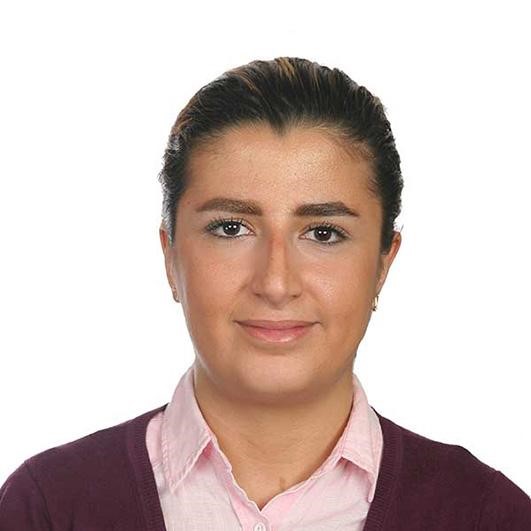
The peer-review process which consisted high quality queries on the paper. I did answer six reviewers’ questions and comments before the paper was accepted. The support from the editorial office is excellent.
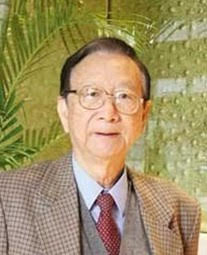
Journal of Neuroscience and Neurological Surgery. I had the experience of publishing a research article recently. The whole process was simple from submission to publication. The reviewers made specific and valuable recommendations and corrections that improved the quality of my publication. I strongly recommend this Journal.
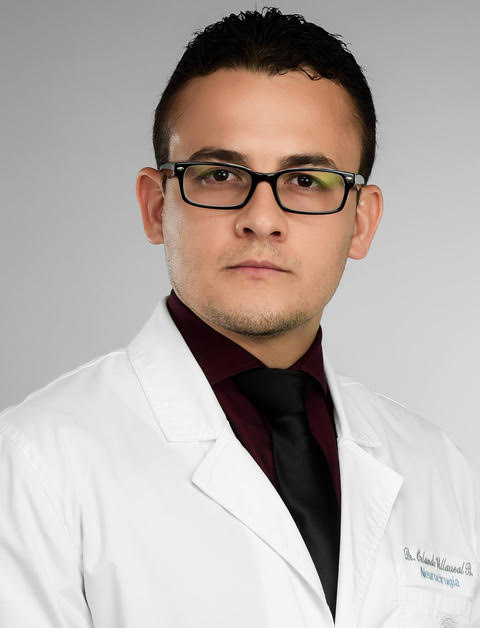
Dr. Katarzyna Byczkowska My testimonial covering: "The peer review process is quick and effective. The support from the editorial office is very professional and friendly. Quality of the Clinical Cardiology and Cardiovascular Interventions is scientific and publishes ground-breaking research on cardiology that is useful for other professionals in the field.

Thank you most sincerely, with regard to the support you have given in relation to the reviewing process and the processing of my article entitled "Large Cell Neuroendocrine Carcinoma of The Prostate Gland: A Review and Update" for publication in your esteemed Journal, Journal of Cancer Research and Cellular Therapeutics". The editorial team has been very supportive.

Testimony of Journal of Clinical Otorhinolaryngology: work with your Reviews has been a educational and constructive experience. The editorial office were very helpful and supportive. It was a pleasure to contribute to your Journal.
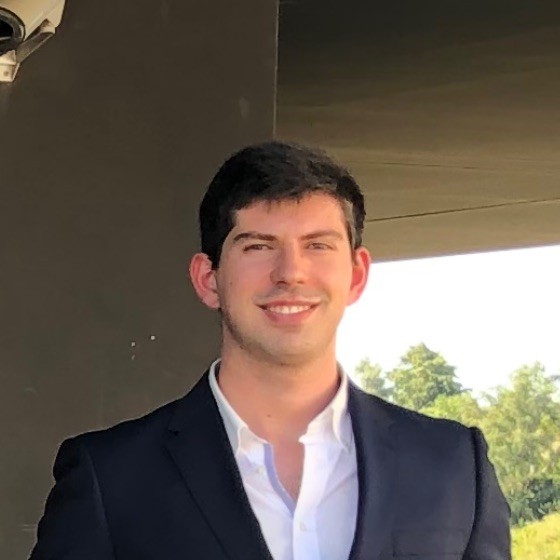
Dr. Bernard Terkimbi Utoo, I am happy to publish my scientific work in Journal of Women Health Care and Issues (JWHCI). The manuscript submission was seamless and peer review process was top notch. I was amazed that 4 reviewers worked on the manuscript which made it a highly technical, standard and excellent quality paper. I appreciate the format and consideration for the APC as well as the speed of publication. It is my pleasure to continue with this scientific relationship with the esteem JWHCI.

This is an acknowledgment for peer reviewers, editorial board of Journal of Clinical Research and Reports. They show a lot of consideration for us as publishers for our research article “Evaluation of the different factors associated with side effects of COVID-19 vaccination on medical students, Mutah university, Al-Karak, Jordan”, in a very professional and easy way. This journal is one of outstanding medical journal.
Dear Hao Jiang, to Journal of Nutrition and Food Processing We greatly appreciate the efficient, professional and rapid processing of our paper by your team. If there is anything else we should do, please do not hesitate to let us know. On behalf of my co-authors, we would like to express our great appreciation to editor and reviewers.

As an author who has recently published in the journal "Brain and Neurological Disorders". I am delighted to provide a testimonial on the peer review process, editorial office support, and the overall quality of the journal. The peer review process at Brain and Neurological Disorders is rigorous and meticulous, ensuring that only high-quality, evidence-based research is published. The reviewers are experts in their fields, and their comments and suggestions were constructive and helped improve the quality of my manuscript. The review process was timely and efficient, with clear communication from the editorial office at each stage. The support from the editorial office was exceptional throughout the entire process. The editorial staff was responsive, professional, and always willing to help. They provided valuable guidance on formatting, structure, and ethical considerations, making the submission process seamless. Moreover, they kept me informed about the status of my manuscript and provided timely updates, which made the process less stressful. The journal Brain and Neurological Disorders is of the highest quality, with a strong focus on publishing cutting-edge research in the field of neurology. The articles published in this journal are well-researched, rigorously peer-reviewed, and written by experts in the field. The journal maintains high standards, ensuring that readers are provided with the most up-to-date and reliable information on brain and neurological disorders. In conclusion, I had a wonderful experience publishing in Brain and Neurological Disorders. The peer review process was thorough, the editorial office provided exceptional support, and the journal's quality is second to none. I would highly recommend this journal to any researcher working in the field of neurology and brain disorders.

Dear Agrippa Hilda, Journal of Neuroscience and Neurological Surgery, Editorial Coordinator, I trust this message finds you well. I want to extend my appreciation for considering my article for publication in your esteemed journal. I am pleased to provide a testimonial regarding the peer review process and the support received from your editorial office. The peer review process for my paper was carried out in a highly professional and thorough manner. The feedback and comments provided by the authors were constructive and very useful in improving the quality of the manuscript. This rigorous assessment process undoubtedly contributes to the high standards maintained by your journal.
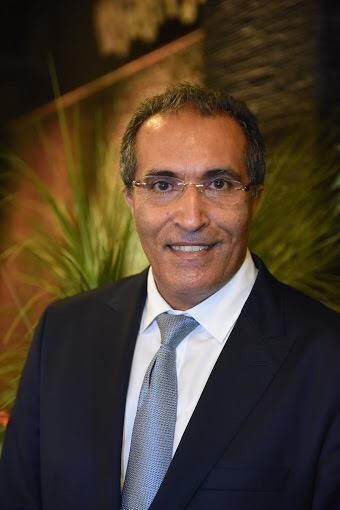
International Journal of Clinical Case Reports and Reviews. I strongly recommend to consider submitting your work to this high-quality journal. The support and availability of the Editorial staff is outstanding and the review process was both efficient and rigorous.
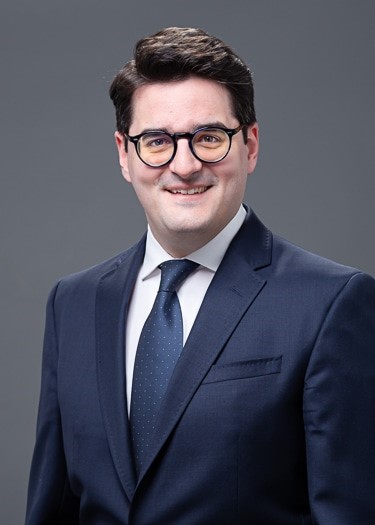
Thank you very much for publishing my Research Article titled “Comparing Treatment Outcome Of Allergic Rhinitis Patients After Using Fluticasone Nasal Spray And Nasal Douching" in the Journal of Clinical Otorhinolaryngology. As Medical Professionals we are immensely benefited from study of various informative Articles and Papers published in this high quality Journal. I look forward to enriching my knowledge by regular study of the Journal and contribute my future work in the field of ENT through the Journal for use by the medical fraternity. The support from the Editorial office was excellent and very prompt. I also welcome the comments received from the readers of my Research Article.

Dear Erica Kelsey, Editorial Coordinator of Cancer Research and Cellular Therapeutics Our team is very satisfied with the processing of our paper by your journal. That was fast, efficient, rigorous, but without unnecessary complications. We appreciated the very short time between the submission of the paper and its publication on line on your site.

I am very glad to say that the peer review process is very successful and fast and support from the Editorial Office. Therefore, I would like to continue our scientific relationship for a long time. And I especially thank you for your kindly attention towards my article. Have a good day!

"We recently published an article entitled “Influence of beta-Cyclodextrins upon the Degradation of Carbofuran Derivatives under Alkaline Conditions" in the Journal of “Pesticides and Biofertilizers” to show that the cyclodextrins protect the carbamates increasing their half-life time in the presence of basic conditions This will be very helpful to understand carbofuran behaviour in the analytical, agro-environmental and food areas. We greatly appreciated the interaction with the editor and the editorial team; we were particularly well accompanied during the course of the revision process, since all various steps towards publication were short and without delay".
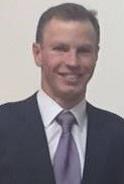
I would like to express my gratitude towards you process of article review and submission. I found this to be very fair and expedient. Your follow up has been excellent. I have many publications in national and international journal and your process has been one of the best so far. Keep up the great work.
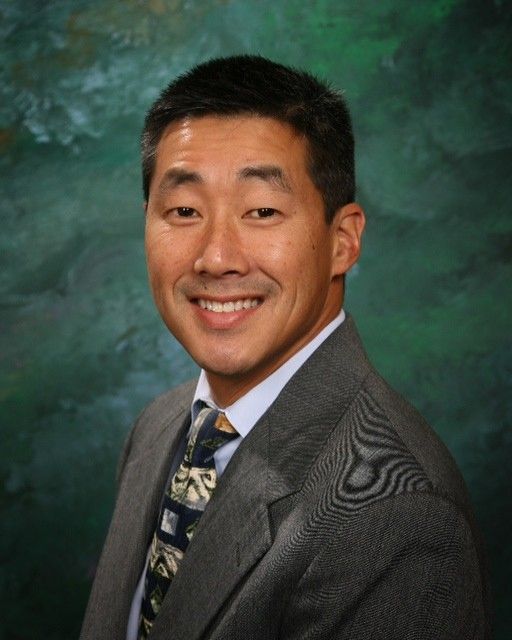
We are grateful for this opportunity to provide a glowing recommendation to the Journal of Psychiatry and Psychotherapy. We found that the editorial team were very supportive, helpful, kept us abreast of timelines and over all very professional in nature. The peer review process was rigorous, efficient and constructive that really enhanced our article submission. The experience with this journal remains one of our best ever and we look forward to providing future submissions in the near future.
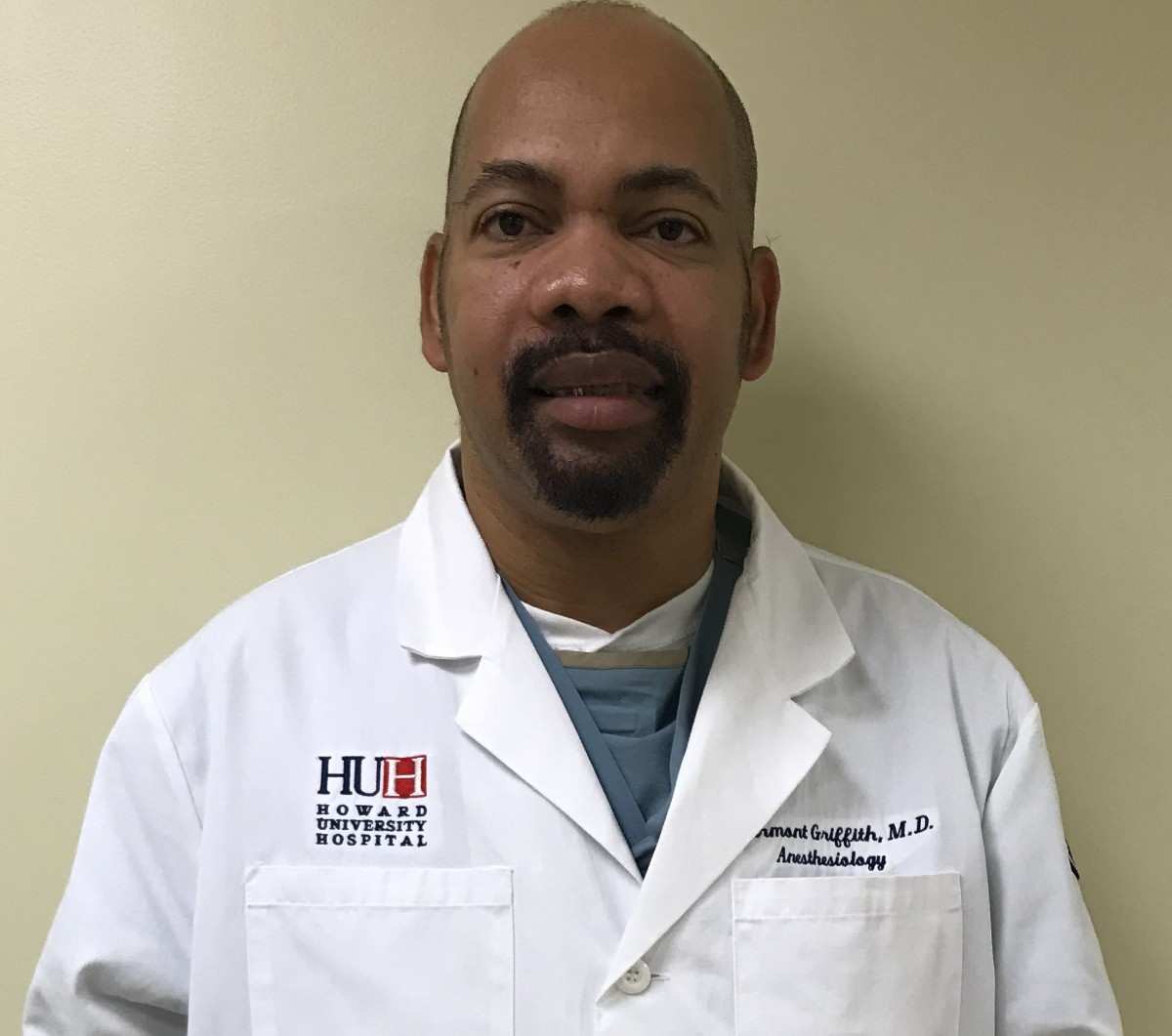
I am very pleased to serve as EBM of the journal, I hope many years of my experience in stem cells can help the journal from one way or another. As we know, stem cells hold great potential for regenerative medicine, which are mostly used to promote the repair response of diseased, dysfunctional or injured tissue using stem cells or their derivatives. I think Stem Cell Research and Therapeutics International is a great platform to publish and share the understanding towards the biology and translational or clinical application of stem cells.
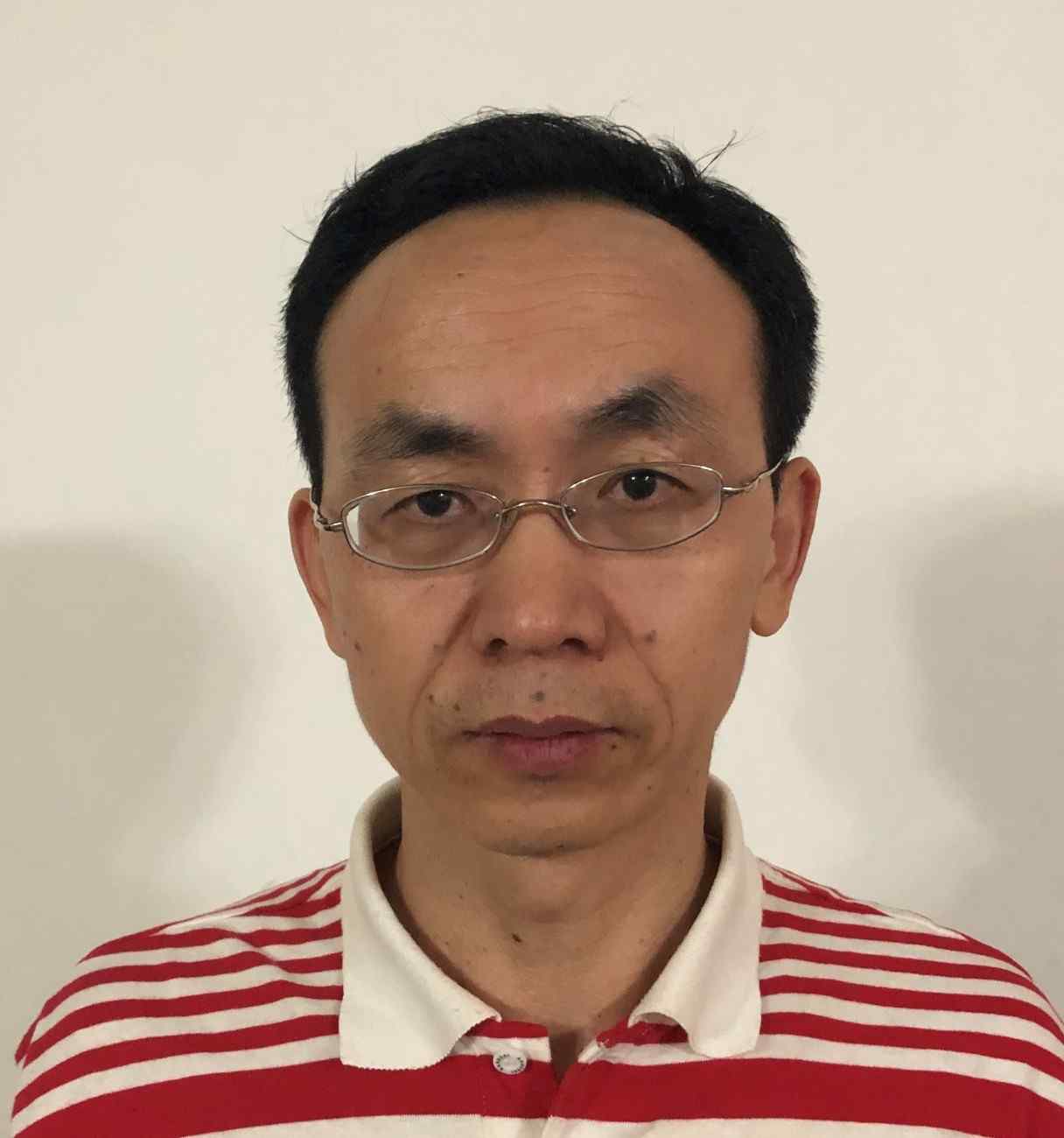
I would like to give my testimony in the support I have got by the peer review process and to support the editorial office where they were of asset to support young author like me to be encouraged to publish their work in your respected journal and globalize and share knowledge across the globe. I really give my great gratitude to your journal and the peer review including the editorial office.
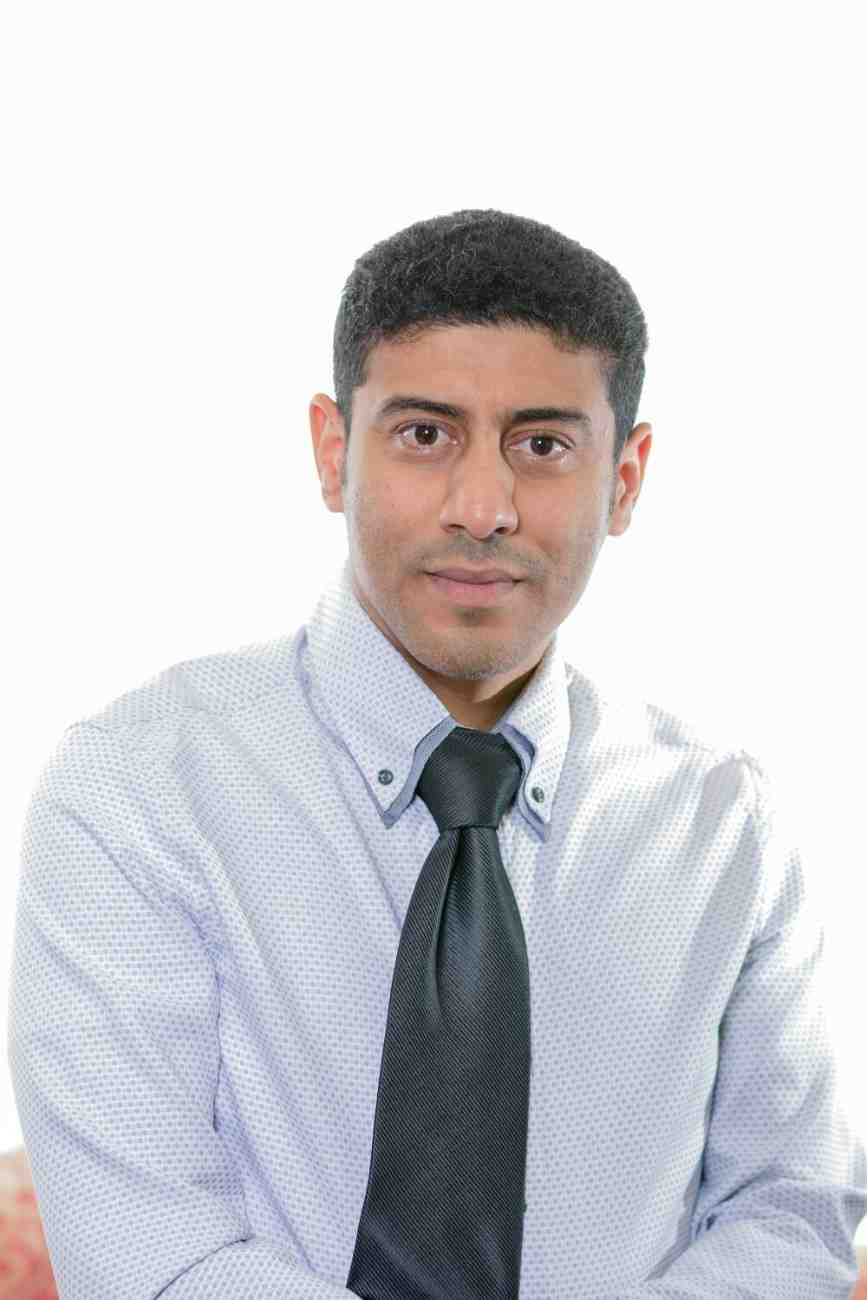
I am delighted to publish our manuscript entitled "A Perspective on Cocaine Induced Stroke - Its Mechanisms and Management" in the Journal of Neuroscience and Neurological Surgery. The peer review process, support from the editorial office, and quality of the journal are excellent. The manuscripts published are of high quality and of excellent scientific value. I recommend this journal very much to colleagues.
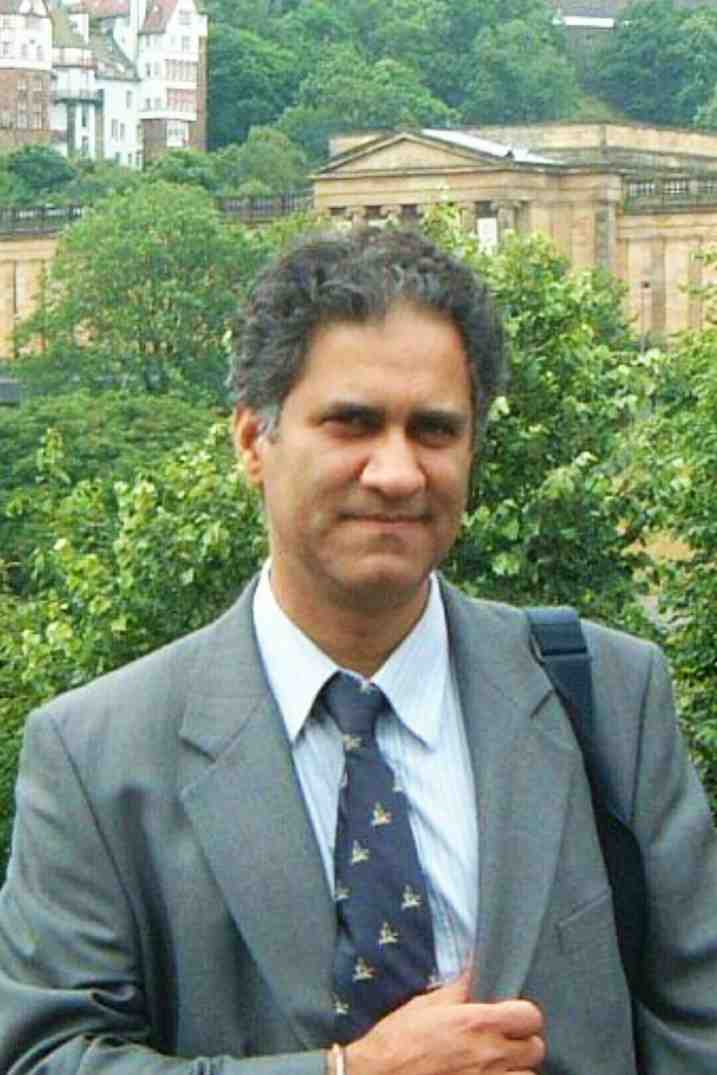
Dr.Tania Muñoz, My experience as researcher and author of a review article in The Journal Clinical Cardiology and Interventions has been very enriching and stimulating. The editorial team is excellent, performs its work with absolute responsibility and delivery. They are proactive, dynamic and receptive to all proposals. Supporting at all times the vast universe of authors who choose them as an option for publication. The team of review specialists, members of the editorial board, are brilliant professionals, with remarkable performance in medical research and scientific methodology. Together they form a frontline team that consolidates the JCCI as a magnificent option for the publication and review of high-level medical articles and broad collective interest. I am honored to be able to share my review article and open to receive all your comments.

“The peer review process of JPMHC is quick and effective. Authors are benefited by good and professional reviewers with huge experience in the field of psychology and mental health. The support from the editorial office is very professional. People to contact to are friendly and happy to help and assist any query authors might have. Quality of the Journal is scientific and publishes ground-breaking research on mental health that is useful for other professionals in the field”.
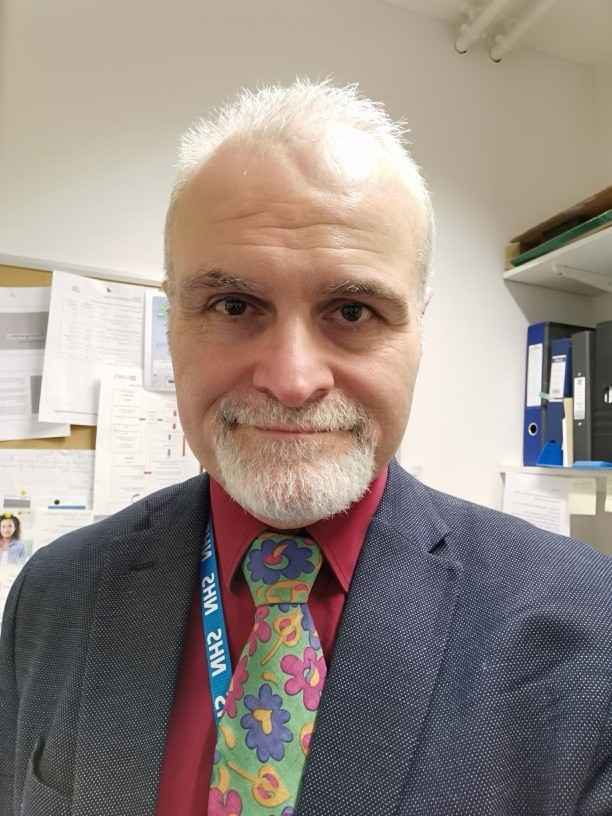
Dear editorial department: On behalf of our team, I hereby certify the reliability and superiority of the International Journal of Clinical Case Reports and Reviews in the peer review process, editorial support, and journal quality. Firstly, the peer review process of the International Journal of Clinical Case Reports and Reviews is rigorous, fair, transparent, fast, and of high quality. The editorial department invites experts from relevant fields as anonymous reviewers to review all submitted manuscripts. These experts have rich academic backgrounds and experience, and can accurately evaluate the academic quality, originality, and suitability of manuscripts. The editorial department is committed to ensuring the rigor of the peer review process, while also making every effort to ensure a fast review cycle to meet the needs of authors and the academic community. Secondly, the editorial team of the International Journal of Clinical Case Reports and Reviews is composed of a group of senior scholars and professionals with rich experience and professional knowledge in related fields. The editorial department is committed to assisting authors in improving their manuscripts, ensuring their academic accuracy, clarity, and completeness. Editors actively collaborate with authors, providing useful suggestions and feedback to promote the improvement and development of the manuscript. We believe that the support of the editorial department is one of the key factors in ensuring the quality of the journal. Finally, the International Journal of Clinical Case Reports and Reviews is renowned for its high- quality articles and strict academic standards. The editorial department is committed to publishing innovative and academically valuable research results to promote the development and progress of related fields. The International Journal of Clinical Case Reports and Reviews is reasonably priced and ensures excellent service and quality ratio, allowing authors to obtain high-level academic publishing opportunities in an affordable manner. I hereby solemnly declare that the International Journal of Clinical Case Reports and Reviews has a high level of credibility and superiority in terms of peer review process, editorial support, reasonable fees, and journal quality. Sincerely, Rui Tao.

Clinical Cardiology and Cardiovascular Interventions I testity the covering of the peer review process, support from the editorial office, and quality of the journal.
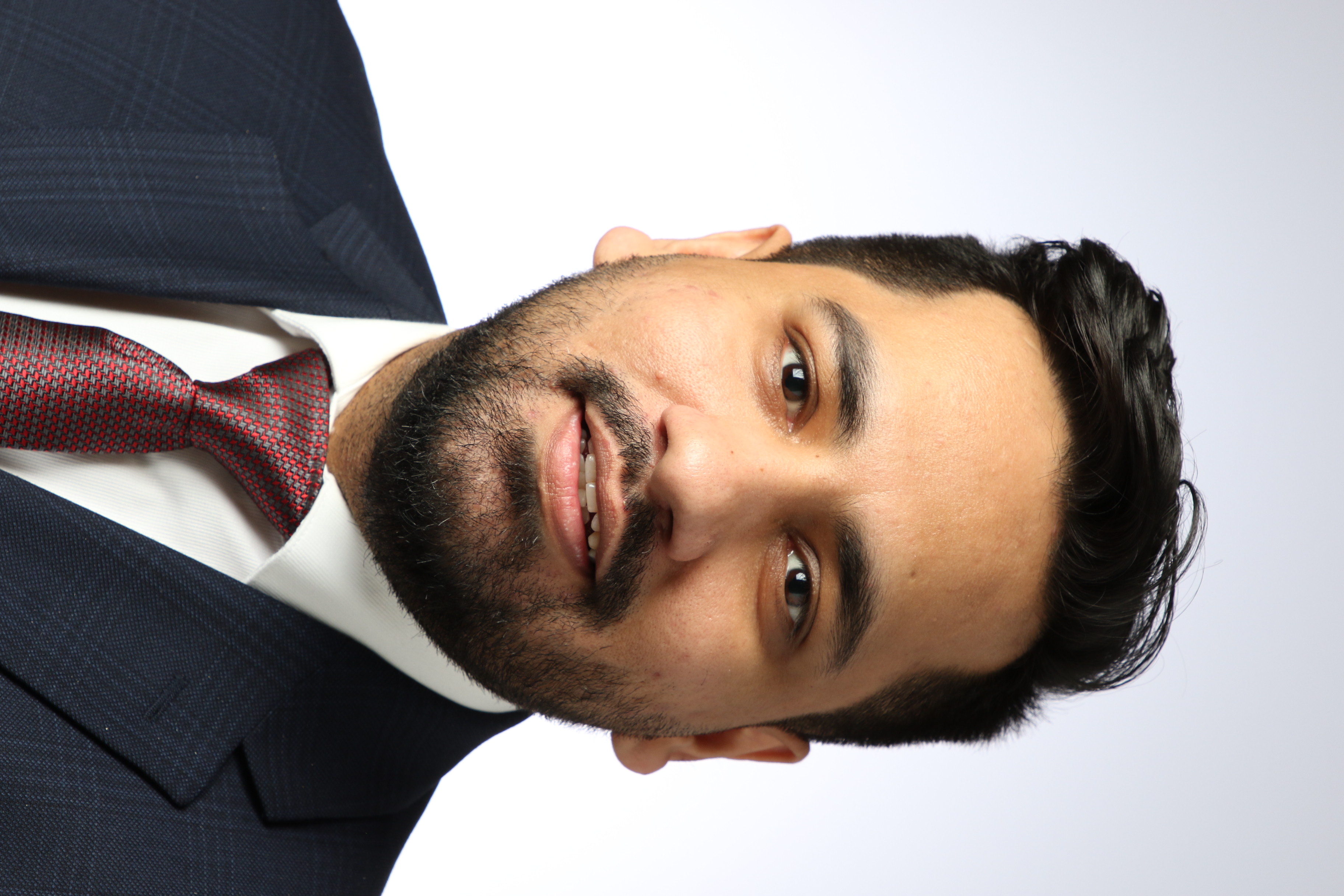
Clinical Cardiology and Cardiovascular Interventions, we deeply appreciate the interest shown in our work and its publication. It has been a true pleasure to collaborate with you. The peer review process, as well as the support provided by the editorial office, have been exceptional, and the quality of the journal is very high, which was a determining factor in our decision to publish with you.
The peer reviewers process is quick and effective, the supports from editorial office is excellent, the quality of journal is high. I would like to collabroate with Internatioanl journal of Clinical Case Reports and Reviews journal clinically in the future time.
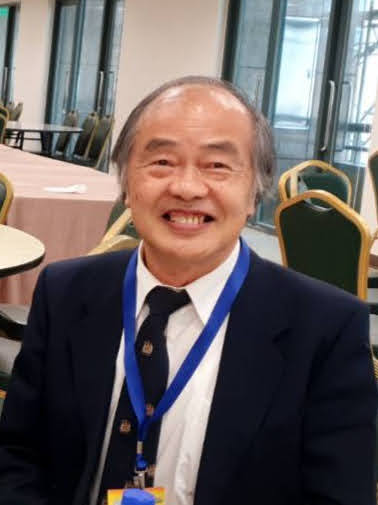
Clinical Cardiology and Cardiovascular Interventions, I would like to express my sincerest gratitude for the trust placed in our team for the publication in your journal. It has been a true pleasure to collaborate with you on this project. I am pleased to inform you that both the peer review process and the attention from the editorial coordination have been excellent. Your team has worked with dedication and professionalism to ensure that your publication meets the highest standards of quality. We are confident that this collaboration will result in mutual success, and we are eager to see the fruits of this shared effort.

Dear Dr. Jessica Magne, Editorial Coordinator 0f Clinical Cardiology and Cardiovascular Interventions, I hope this message finds you well. I want to express my utmost gratitude for your excellent work and for the dedication and speed in the publication process of my article titled "Navigating Innovation: Qualitative Insights on Using Technology for Health Education in Acute Coronary Syndrome Patients." I am very satisfied with the peer review process, the support from the editorial office, and the quality of the journal. I hope we can maintain our scientific relationship in the long term.
Dear Monica Gissare, - Editorial Coordinator of Nutrition and Food Processing. ¨My testimony with you is truly professional, with a positive response regarding the follow-up of the article and its review, you took into account my qualities and the importance of the topic¨.

Dear Dr. Jessica Magne, Editorial Coordinator 0f Clinical Cardiology and Cardiovascular Interventions, The review process for the article “The Handling of Anti-aggregants and Anticoagulants in the Oncologic Heart Patient Submitted to Surgery” was extremely rigorous and detailed. From the initial submission to the final acceptance, the editorial team at the “Journal of Clinical Cardiology and Cardiovascular Interventions” demonstrated a high level of professionalism and dedication. The reviewers provided constructive and detailed feedback, which was essential for improving the quality of our work. Communication was always clear and efficient, ensuring that all our questions were promptly addressed. The quality of the “Journal of Clinical Cardiology and Cardiovascular Interventions” is undeniable. It is a peer-reviewed, open-access publication dedicated exclusively to disseminating high-quality research in the field of clinical cardiology and cardiovascular interventions. The journal's impact factor is currently under evaluation, and it is indexed in reputable databases, which further reinforces its credibility and relevance in the scientific field. I highly recommend this journal to researchers looking for a reputable platform to publish their studies.

Dear Editorial Coordinator of the Journal of Nutrition and Food Processing! "I would like to thank the Journal of Nutrition and Food Processing for including and publishing my article. The peer review process was very quick, movement and precise. The Editorial Board has done an extremely conscientious job with much help, valuable comments and advices. I find the journal very valuable from a professional point of view, thank you very much for allowing me to be part of it and I would like to participate in the future!”

Dealing with The Journal of Neurology and Neurological Surgery was very smooth and comprehensive. The office staff took time to address my needs and the response from editors and the office was prompt and fair. I certainly hope to publish with this journal again.Their professionalism is apparent and more than satisfactory. Susan Weiner
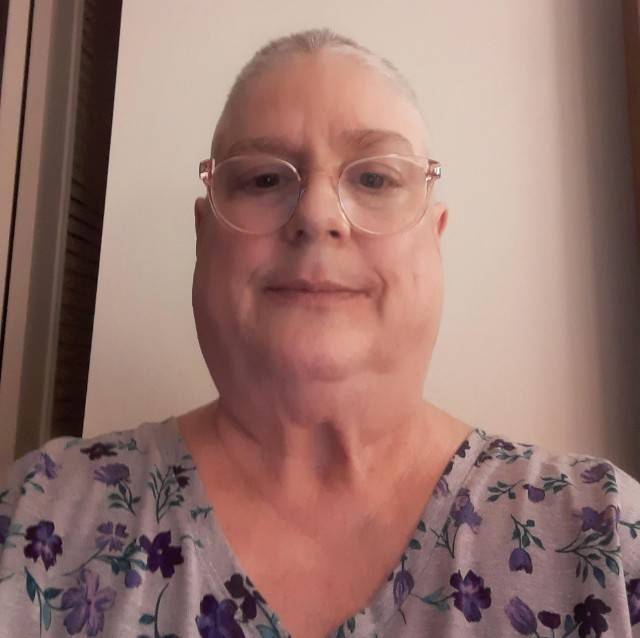
My Testimonial Covering as fellowing: Lin-Show Chin. The peer reviewers process is quick and effective, the supports from editorial office is excellent, the quality of journal is high. I would like to collabroate with Internatioanl journal of Clinical Case Reports and Reviews.
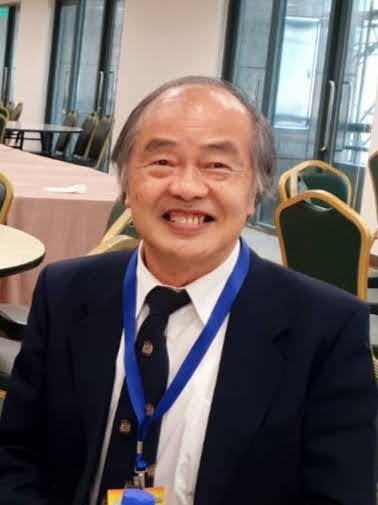
My experience publishing in Psychology and Mental Health Care was exceptional. The peer review process was rigorous and constructive, with reviewers providing valuable insights that helped enhance the quality of our work. The editorial team was highly supportive and responsive, making the submission process smooth and efficient. The journal's commitment to high standards and academic rigor makes it a respected platform for quality research. I am grateful for the opportunity to publish in such a reputable journal.
My experience publishing in International Journal of Clinical Case Reports and Reviews was exceptional. I Come forth to Provide a Testimonial Covering the Peer Review Process and the editorial office for the Professional and Impartial Evaluation of the Manuscript.
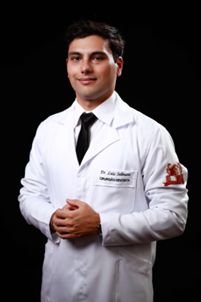
I would like to offer my testimony in the support. I have received through the peer review process and support the editorial office where they are to support young authors like me, encourage them to publish their work in your esteemed journals, and globalize and share knowledge globally. I really appreciate your journal, peer review, and editorial office.
Dear Agrippa Hilda- Editorial Coordinator of Journal of Neuroscience and Neurological Surgery, "The peer review process was very quick and of high quality, which can also be seen in the articles in the journal. The collaboration with the editorial office was very good."
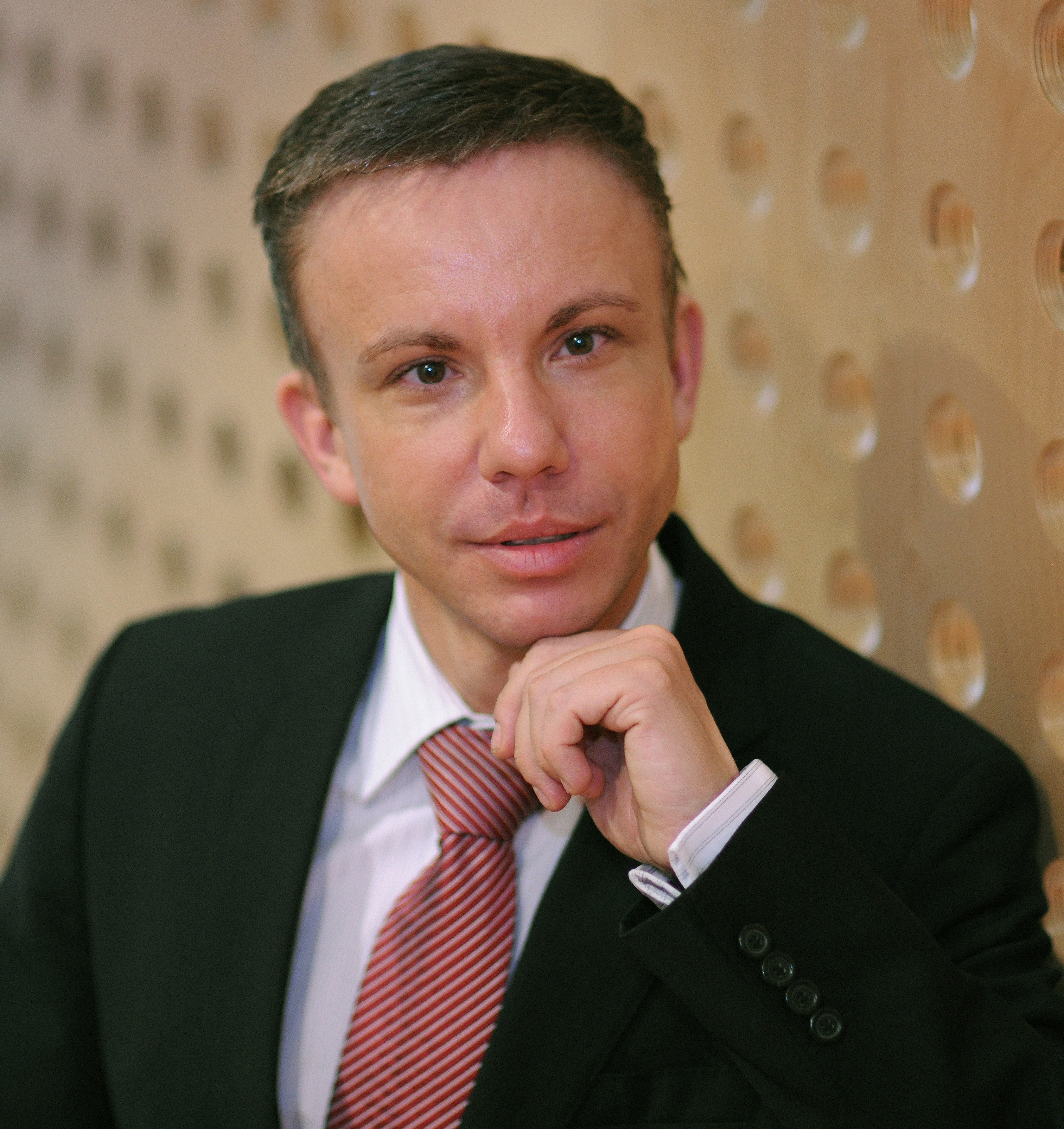
I would like to express my sincere gratitude for the support and efficiency provided by the editorial office throughout the publication process of my article, “Delayed Vulvar Metastases from Rectal Carcinoma: A Case Report.” I greatly appreciate the assistance and guidance I received from your team, which made the entire process smooth and efficient. The peer review process was thorough and constructive, contributing to the overall quality of the final article. I am very grateful for the high level of professionalism and commitment shown by the editorial staff, and I look forward to maintaining a long-term collaboration with the International Journal of Clinical Case Reports and Reviews.
To Dear Erin Aust, I would like to express my heartfelt appreciation for the opportunity to have my work published in this esteemed journal. The entire publication process was smooth and well-organized, and I am extremely satisfied with the final result. The Editorial Team demonstrated the utmost professionalism, providing prompt and insightful feedback throughout the review process. Their clear communication and constructive suggestions were invaluable in enhancing my manuscript, and their meticulous attention to detail and dedication to quality are truly commendable. Additionally, the support from the Editorial Office was exceptional. From the initial submission to the final publication, I was guided through every step of the process with great care and professionalism. The team's responsiveness and assistance made the entire experience both easy and stress-free. I am also deeply impressed by the quality and reputation of the journal. It is an honor to have my research featured in such a respected publication, and I am confident that it will make a meaningful contribution to the field.

"I am grateful for the opportunity of contributing to [International Journal of Clinical Case Reports and Reviews] and for the rigorous review process that enhances the quality of research published in your esteemed journal. I sincerely appreciate the time and effort of your team who have dedicatedly helped me in improvising changes and modifying my manuscript. The insightful comments and constructive feedback provided have been invaluable in refining and strengthening my work".
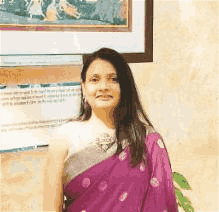
I thank the ‘Journal of Clinical Research and Reports’ for accepting this article for publication. This is a rigorously peer reviewed journal which is on all major global scientific data bases. I note the review process was prompt, thorough and professionally critical. It gave us an insight into a number of important scientific/statistical issues. The review prompted us to review the relevant literature again and look at the limitations of the study. The peer reviewers were open, clear in the instructions and the editorial team was very prompt in their communication. This journal certainly publishes quality research articles. I would recommend the journal for any future publications.
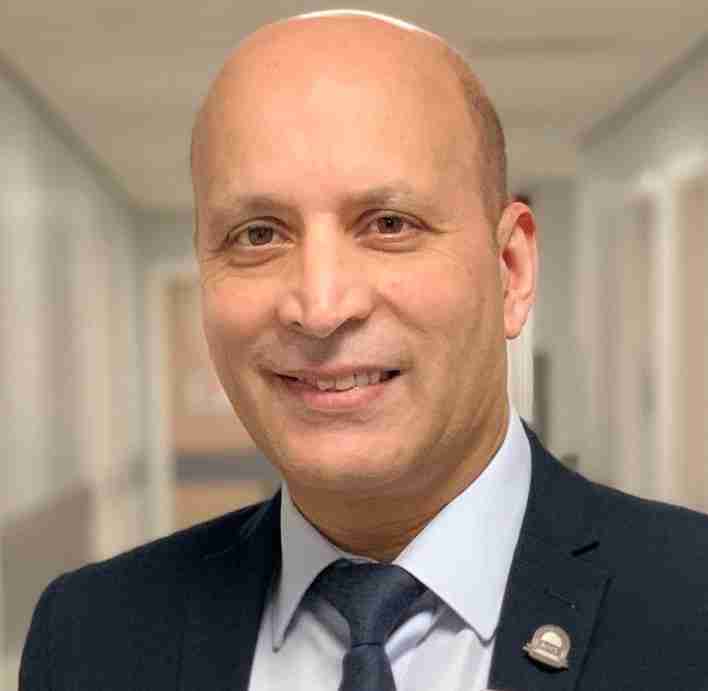
Dear Jessica Magne, with gratitude for the joint work. Fast process of receiving and processing the submitted scientific materials in “Clinical Cardiology and Cardiovascular Interventions”. High level of competence of the editors with clear and correct recommendations and ideas for enriching the article.

We found the peer review process quick and positive in its input. The support from the editorial officer has been very agile, always with the intention of improving the article and taking into account our subsequent corrections.
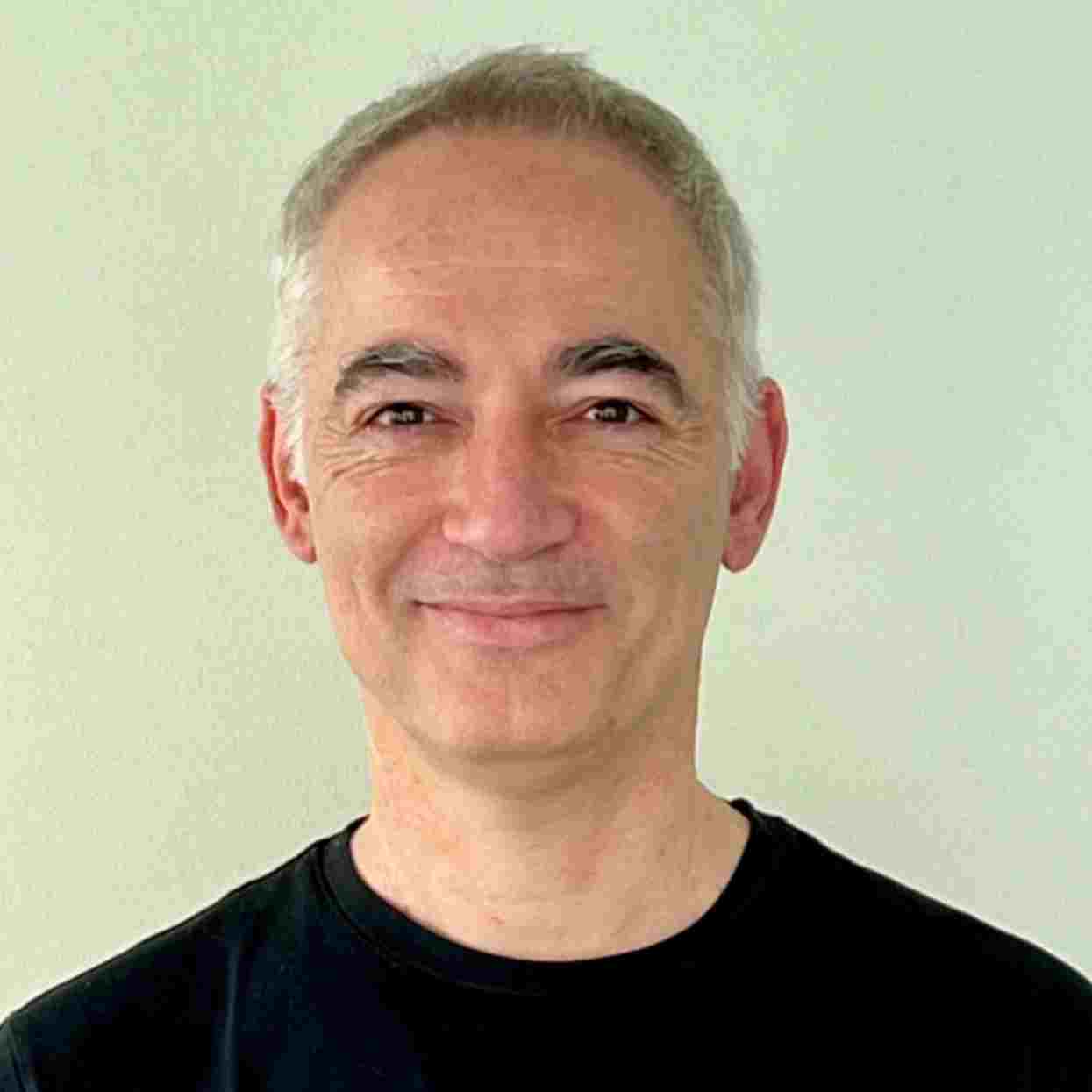
My article, titled 'No Way Out of the Smartphone Epidemic Without Considering the Insights of Brain Research,' has been republished in the International Journal of Clinical Case Reports and Reviews. The review process was seamless and professional, with the editors being both friendly and supportive. I am deeply grateful for their efforts.
To Dear Erin Aust – Editorial Coordinator of Journal of General Medicine and Clinical Practice! I declare that I am absolutely satisfied with your work carried out with great competence in following the manuscript during the various stages from its receipt, during the revision process to the final acceptance for publication. Thank Prof. Elvira Farina

Dear Jessica, and the super professional team of the ‘Clinical Cardiology and Cardiovascular Interventions’ I am sincerely grateful to the coordinated work of the journal team for the no problem with the submission of my manuscript: “Cardiometabolic Disorders in A Pregnant Woman with Severe Preeclampsia on the Background of Morbid Obesity (Case Report).” The review process by 5 experts was fast, and the comments were professional, which made it more specific and academic, and the process of publication and presentation of the article was excellent. I recommend that my colleagues publish articles in this journal, and I am interested in further scientific cooperation. Sincerely and best wishes, Dr. Oleg Golyanovskiy.
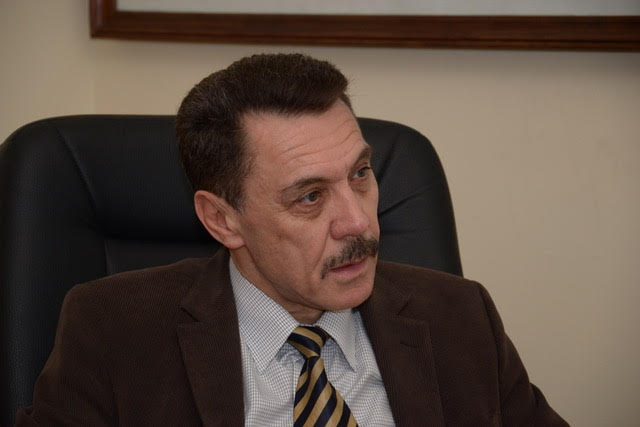
Dear Ashley Rosa, Editorial Coordinator of the journal - Psychology and Mental Health Care. " The process of obtaining publication of my article in the Psychology and Mental Health Journal was positive in all areas. The peer review process resulted in a number of valuable comments, the editorial process was collaborative and timely, and the quality of this journal has been quickly noticed, resulting in alternative journals contacting me to publish with them." Warm regards, Susan Anne Smith, PhD. Australian Breastfeeding Association.
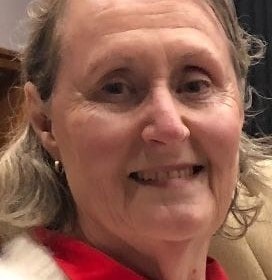
Dear Jessica Magne, Editorial Coordinator, Clinical Cardiology and Cardiovascular Interventions, Auctores Publishing LLC. I appreciate the journal (JCCI) editorial office support, the entire team leads were always ready to help, not only on technical front but also on thorough process. Also, I should thank dear reviewers’ attention to detail and creative approach to teach me and bring new insights by their comments. Surely, more discussions and introduction of other hemodynamic devices would provide better prevention and management of shock states. Your efforts and dedication in presenting educational materials in this journal are commendable. Best wishes from, Farahnaz Fallahian.
Dear Maria Emerson, Editorial Coordinator, International Journal of Clinical Case Reports and Reviews, Auctores Publishing LLC. I am delighted to have published our manuscript, "Acute Colonic Pseudo-Obstruction (ACPO): A rare but serious complication following caesarean section." I want to thank the editorial team, especially Maria Emerson, for their prompt review of the manuscript, quick responses to queries, and overall support. Yours sincerely Dr. Victor Olagundoye.
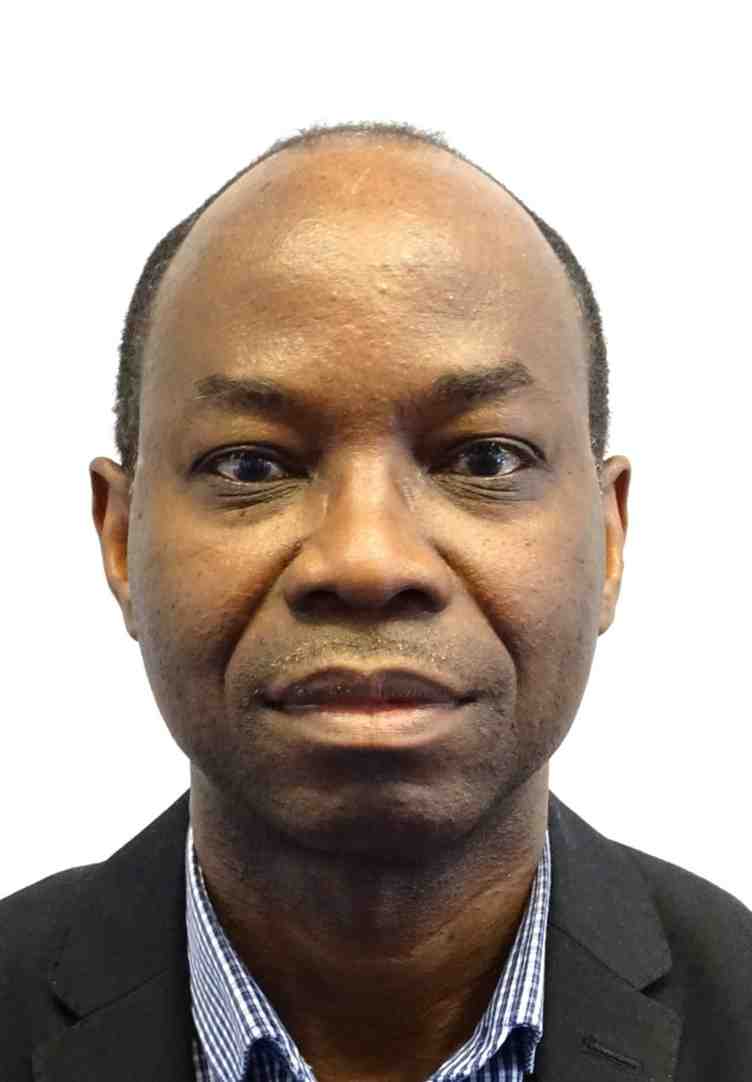
Dear Ashley Rosa, Editorial Coordinator, International Journal of Clinical Case Reports and Reviews. Many thanks for publishing this manuscript after I lost confidence the editors were most helpful, more than other journals Best wishes from, Susan Anne Smith, PhD. Australian Breastfeeding Association.
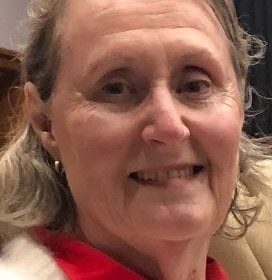
Dear Agrippa Hilda, Editorial Coordinator, Journal of Neuroscience and Neurological Surgery. The entire process including article submission, review, revision, and publication was extremely easy. The journal editor was prompt and helpful, and the reviewers contributed to the quality of the paper. Thank you so much! Eric Nussbaum, MD
Dr Hala Al Shaikh This is to acknowledge that the peer review process for the article ’ A Novel Gnrh1 Gene Mutation in Four Omani Male Siblings, Presentation and Management ’ sent to the International Journal of Clinical Case Reports and Reviews was quick and smooth. The editorial office was prompt with easy communication.
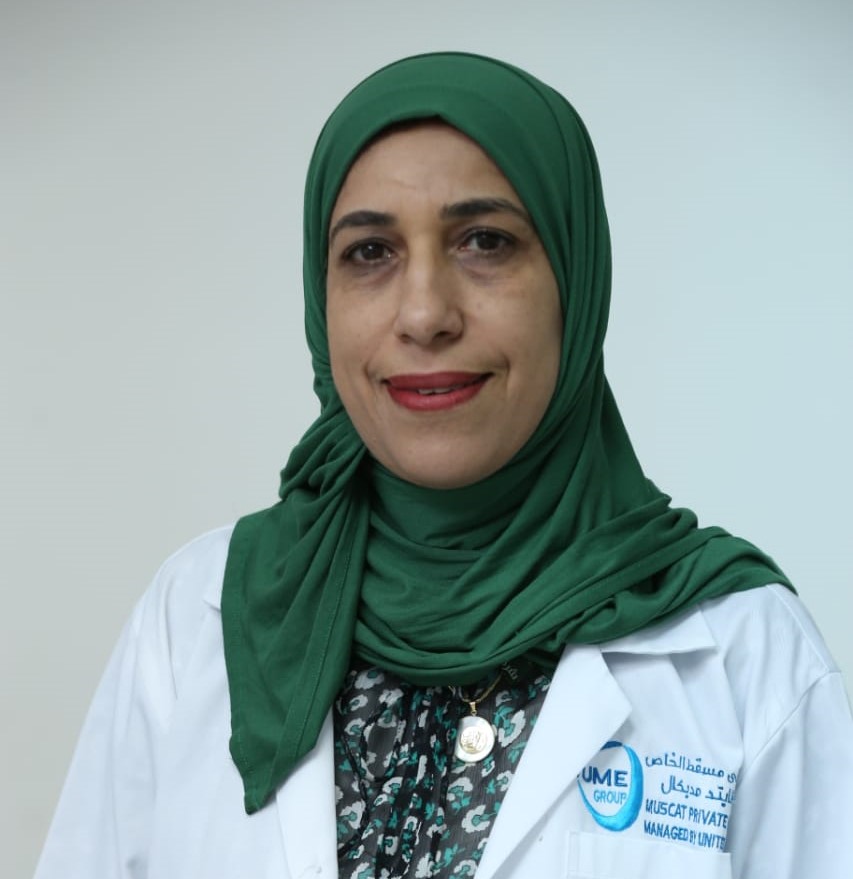
Dear Erin Aust, Editorial Coordinator, Journal of General Medicine and Clinical Practice. We are pleased to share our experience with the “Journal of General Medicine and Clinical Practice”, following the successful publication of our article. The peer review process was thorough and constructive, helping to improve the clarity and quality of the manuscript. We are especially thankful to Ms. Erin Aust, the Editorial Coordinator, for her prompt communication and continuous support throughout the process. Her professionalism ensured a smooth and efficient publication experience. The journal upholds high editorial standards, and we highly recommend it to fellow researchers seeking a credible platform for their work. Best wishes By, Dr. Rakhi Mishra.

Dear Jessica Magne, Editorial Coordinator, Clinical Cardiology and Cardiovascular Interventions, Auctores Publishing LLC. The peer review process of the journal of Clinical Cardiology and Cardiovascular Interventions was excellent and fast, as was the support of the editorial office and the quality of the journal. Kind regards Walter F. Riesen Prof. Dr. Dr. h.c. Walter F. Riesen.

Dear Ashley Rosa, Editorial Coordinator, International Journal of Clinical Case Reports and Reviews, Auctores Publishing LLC. Thank you for publishing our article, Exploring Clozapine's Efficacy in Managing Aggression: A Multiple Single-Case Study in Forensic Psychiatry in the international journal of clinical case reports and reviews. We found the peer review process very professional and efficient. The comments were constructive, and the whole process was efficient. On behalf of the co-authors, I would like to thank you for publishing this article. With regards, Dr. Jelle R. Lettinga.

Dear Clarissa Eric, Editorial Coordinator, Journal of Clinical Case Reports and Studies, I would like to express my deep admiration for the exceptional professionalism demonstrated by your journal. I am thoroughly impressed by the speed of the editorial process, the substantive and insightful reviews, and the meticulous preparation of the manuscript for publication. Additionally, I greatly appreciate the courteous and immediate responses from your editorial office to all my inquiries. Best Regards, Dariusz Ziora

Dear Chrystine Mejia, Editorial Coordinator, Journal of Neurodegeneration and Neurorehabilitation, Auctores Publishing LLC, We would like to thank the editorial team for the smooth and high-quality communication leading up to the publication of our article in the Journal of Neurodegeneration and Neurorehabilitation. The reviewers have extensive knowledge in the field, and their relevant questions helped to add value to our publication. Kind regards, Dr. Ravi Shrivastava.

Dear Clarissa Eric, Editorial Coordinator, Journal of Clinical Case Reports and Studies, Auctores Publishing LLC, USA Office: +1-(302)-520-2644. I would like to express my sincere appreciation for the efficient and professional handling of my case report by the ‘Journal of Clinical Case Reports and Studies’. The peer review process was not only fast but also highly constructive—the reviewers’ comments were clear, relevant, and greatly helped me improve the quality and clarity of my manuscript. I also received excellent support from the editorial office throughout the process. Communication was smooth and timely, and I felt well guided at every stage, from submission to publication. The overall quality and rigor of the journal are truly commendable. I am pleased to have published my work with Journal of Clinical Case Reports and Studies, and I look forward to future opportunities for collaboration. Sincerely, Aline Tollet, UCLouvain.

Dear Ms. Mayra Duenas, Editorial Coordinator, International Journal of Clinical Case Reports and Reviews. “The International Journal of Clinical Case Reports and Reviews represented the “ideal house” to share with the research community a first experience with the use of the Simeox device for speech rehabilitation. High scientific reputation and attractive website communication were first determinants for the selection of this Journal, and the following submission process exceeded expectations: fast but highly professional peer review, great support by the editorial office, elegant graphic layout. Exactly what a dynamic research team - also composed by allied professionals - needs!" From, Chiara Beccaluva, PT - Italy.

Dear Maria Emerson, Editorial Coordinator, we have deeply appreciated the professionalism demonstrated by the International Journal of Clinical Case Reports and Reviews. The reviewers have extensive knowledge of our field and have been very efficient and fast in supporting the process. I am really looking forward to further collaboration. Thanks. Best regards, Dr. Claudio Ligresti